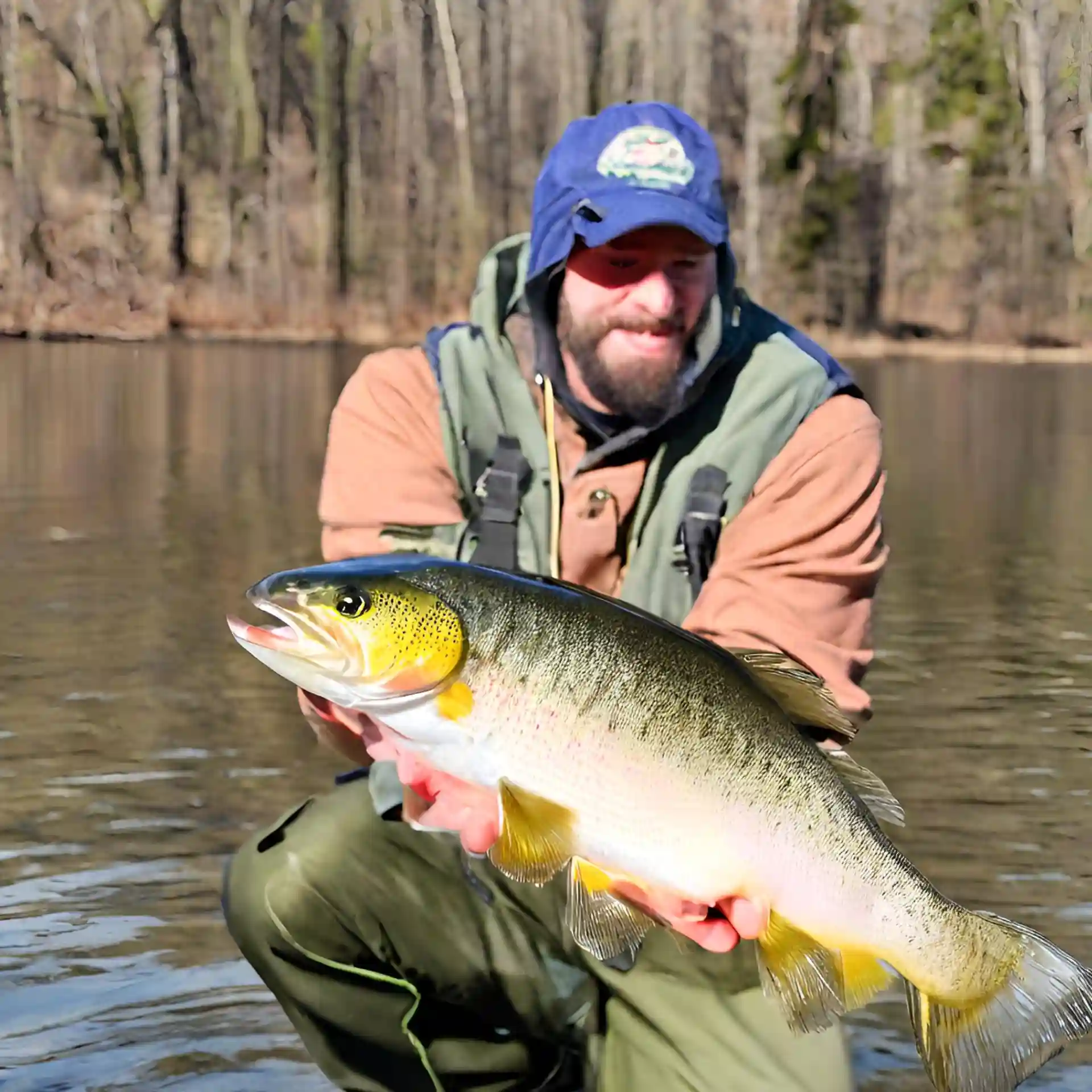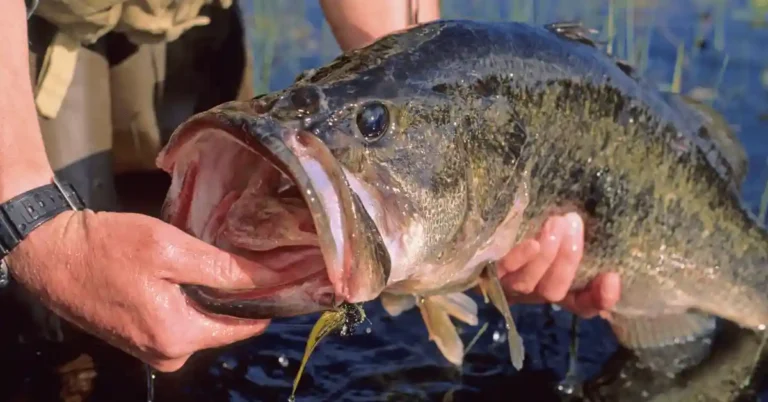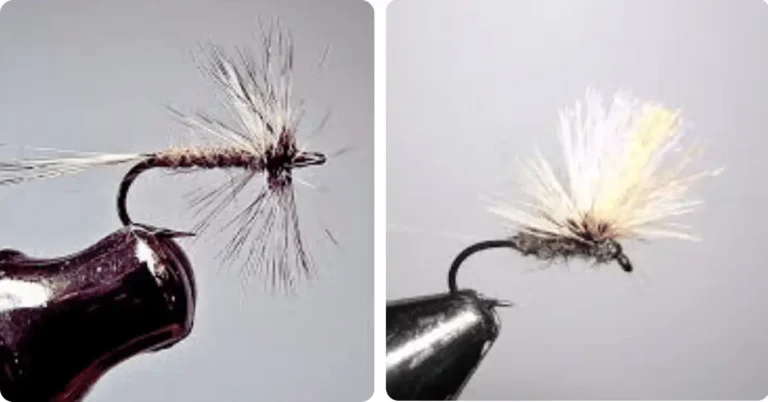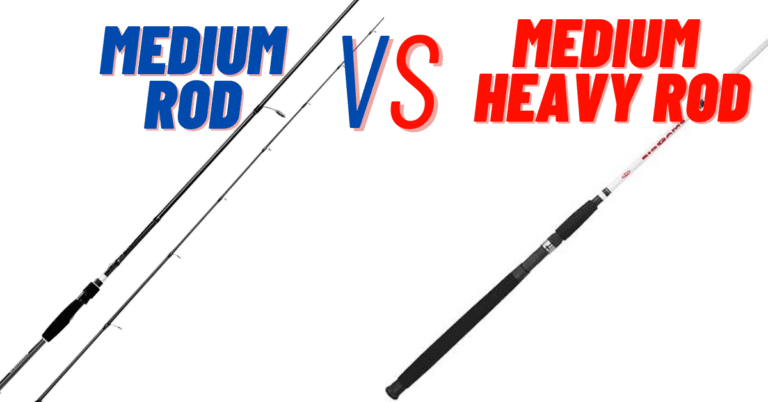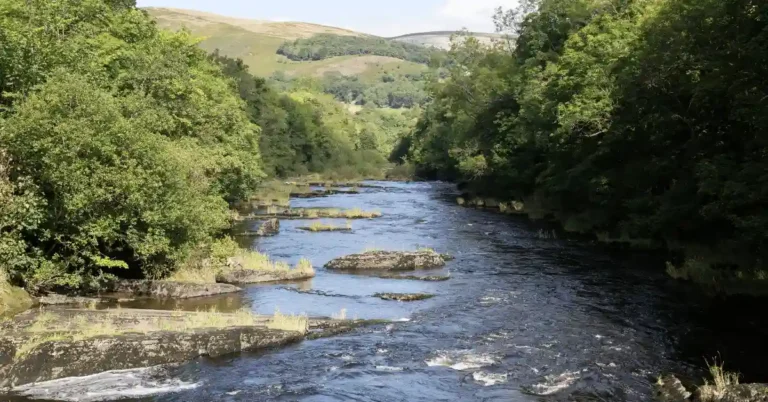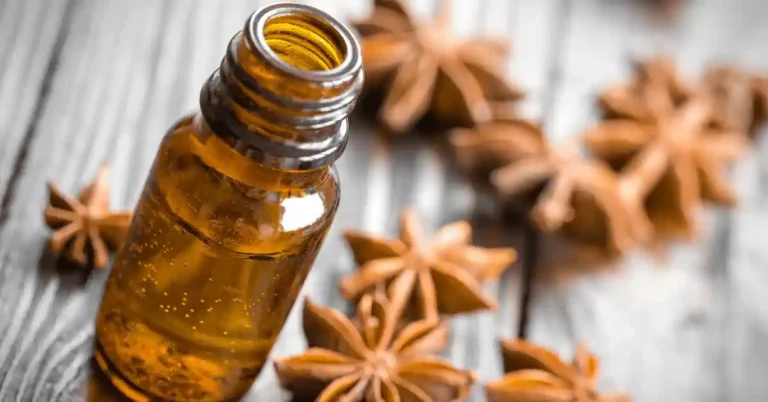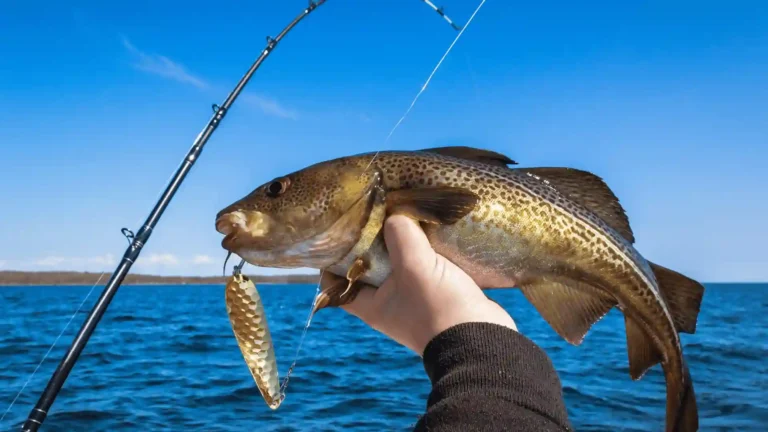Perch Fishing Rule: How To Catch Yellow Perch (2024)
Perch Fishing 101: How To Catch Yellow Perch (2024)
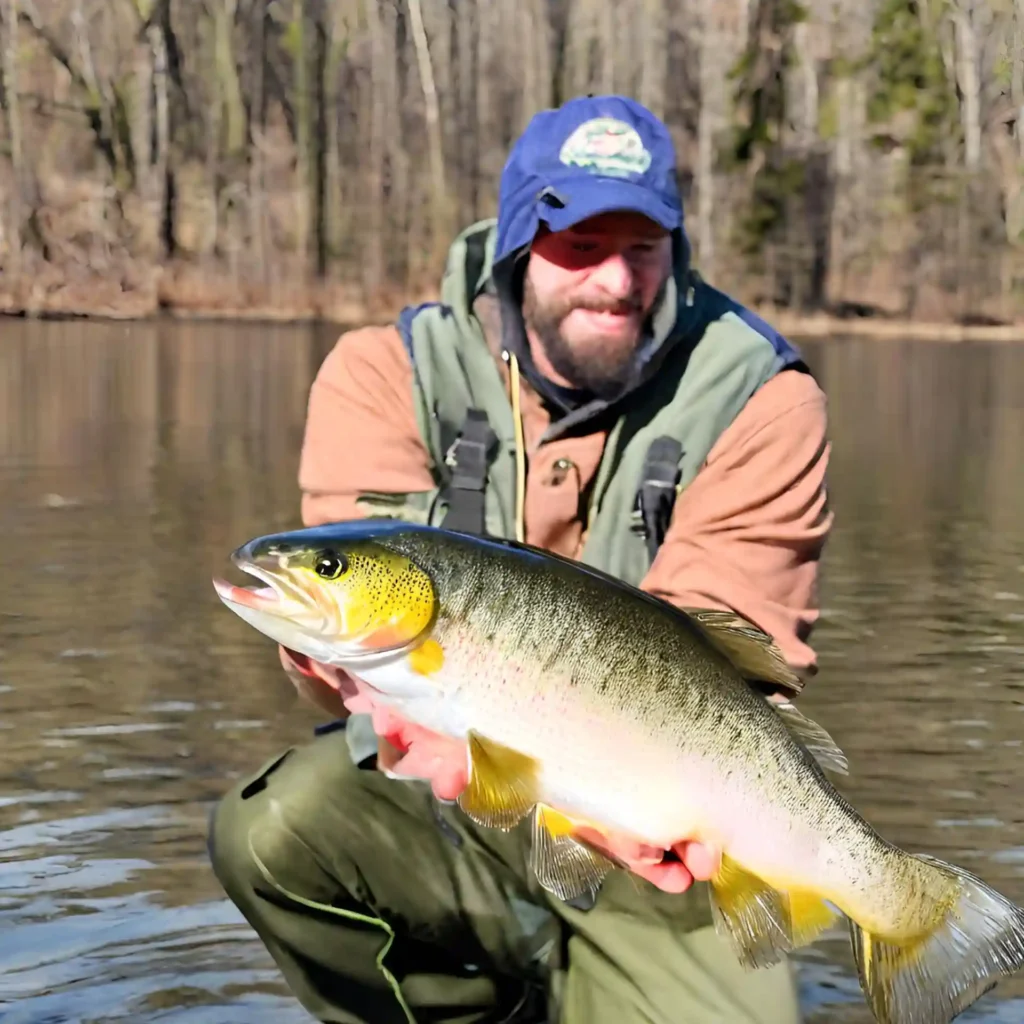
Perch fishing might just be the best-kept secret in the angling world, often overshadowed by the pursuit of bigger catches. But trust me, within those serene waters, lies a world of excitement waiting to be discovered.
You see, perch aren’t just abundant, they’re feisty too, making every catch a thrill, whether you’re a seasoned angler or just starting out.
In this guide, we’re diving deep into the world of perch fishing, covering everything from techniques to gear recommendations, so you can make the most of your time on the water.
Whether you’re a pro looking to mix up your catch or a newbie eager for an adrenaline-pumping adventure, perch fishing offers endless possibilities.
So, let’s get ready for some action-packed days on the water and unforgettable moments reeling in those spirited fighters!
Yellow Perch Fishing Basics
Habitat and Characteristics
Yellow perch are a common sight in North American freshwater bodies. With their striking yellow hue, you’ll spot them in lakes, ponds, rivers, and streams across the continent.
Behavior and Feeding Habits
Knowing a bit about perch behavior goes a long way in landing your catch. These guys love to hang out in groups, especially during springtime. They’re drawn to underwater structures like rocks and fallen trees, where they can find both shelter and food.
What They Like to Eat
Perch aren’t picky eaters—they’ll go for just about anything, from bugs to small fish. That’s why using a variety of baits can work wonders. Live bait like worms or minnows is a popular choice, but don’t count out artificial baits like jigs or spinners—they can be just as effective.
Timing is Everything
If you’re planning a perch fishing trip, aim for dawn or dusk—they’re most active during these times when they feel safest. Knowing their hangouts and preferred meals can seriously up your fishing game.
Now, let’s talk gear.
Essential Equipment for Yellow Perch Fishing
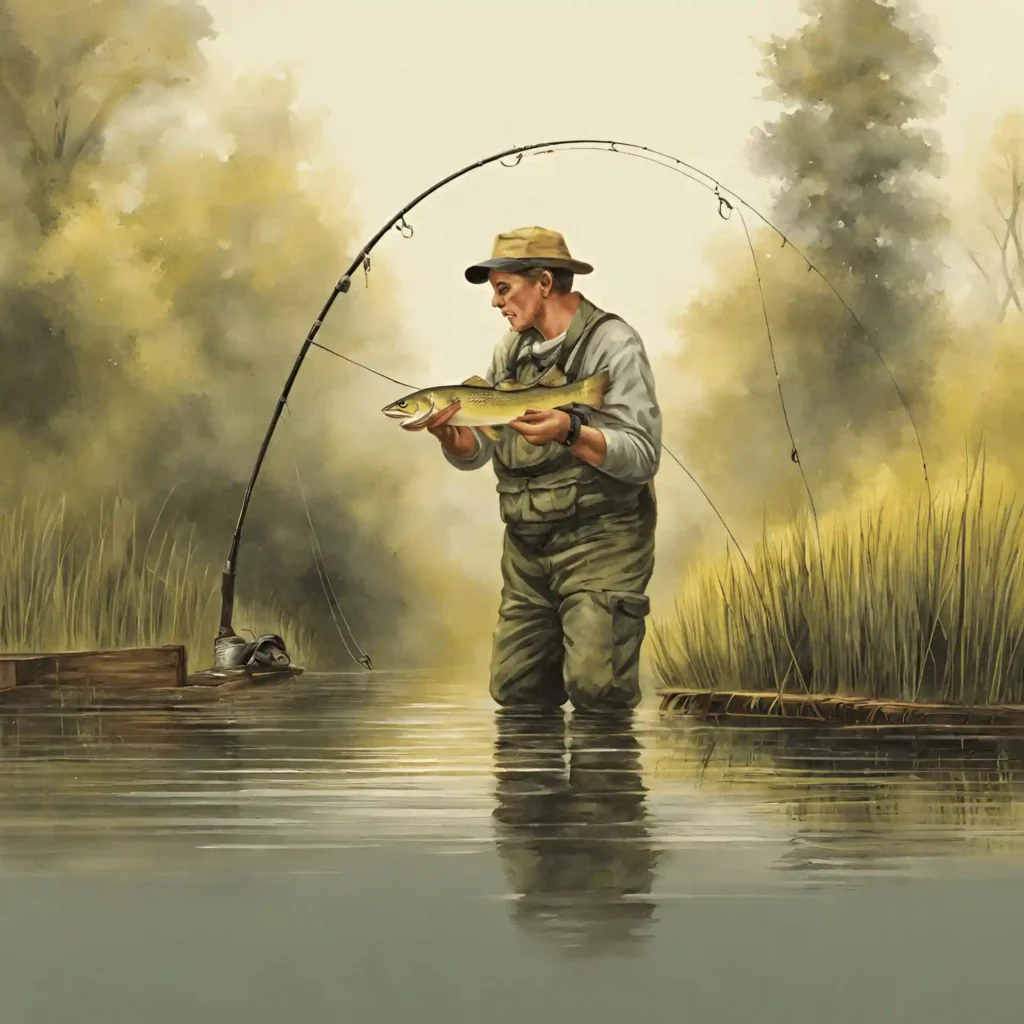
Spinning Rod and Reel Combo
For perch fishing, you’ll want a light to medium-action spinning rod and reel combo. Look for something around 6 to 7 feet long with a fast or medium-fast action. This setup gives you the sensitivity to feel those subtle bites and the power to reel in your catch.
Fishing Line
Choosing the right fishing line is crucial for successful yellow perch fishing. Opt for 4-8 lb test monofilament or fluorocarbon line as they provide excellent sensitivity, which allows you to detect even the slightest nibbles from these small but crafty fish. The lighter line also helps maintain stealthiness in clear water conditions where yellow perch are often found. Monofilament lines are more affordable while fluorocarbon lines offer better abrasion resistance and invisibility underwater.
Consider factors such as water clarity, weather conditions, and the size of the yellow perch you’re targeting. Thinner lines work well in clear water but may not hold up against larger fish or rougher environments.
Hooks, Sinkers, and Bobbers
Having a variety of hooks, sinkers, and bobbers in your tackle box is essential for adapting to different fishing conditions. Hook sizes ranging from #6 to #10 are ideal for perch, and make sure they’re sharp for easy hook penetration. Sinkers help adjust your bait’s depth, while bobbers help detect bites—both crucial for a successful day on the water.
With the right gear and a bit of know-how, you’re all set for an unforgettable perch fishing adventure. So grab your gear, hit the water, and get ready for some serious fun!
Choosing the Right Bait and Lures for Yellow Perch
Live Bait: Minnows, Worms, and Leeches
Let’s talk about the good old live bait. When it comes to yellow perch, nothing beats the allure of a lively snack. These critters are notorious for their hearty appetites, so offering them a tempting treat can often seal the deal.
First up, we have minnows. These little swimmers are like a dinner bell for perch, thanks to their natural movements that mimic those of small prey. It’s no wonder they’re a go-to choice for many anglers.
Then there are worms—good old-fashioned, wriggly worms. Easily available and simple to use, they’re like the comfort food of the fishing world. Thread one onto your hook, and watch it dance in the water, driving perch crazy with hunger.
Now, here’s a bit of a wildcard: leeches. They might not be as popular as minnows or worms, but don’t underestimate their charm. Leeches have a knack for grabbing perch’s attention with their lively movements. Just remember, if you’re going the live bait route, keep them fresh and lively. Swap out any tired or listless ones for fresh ones to keep the perch interested.
Artificial Lures: Small Jigs, Spinners, and Crankbaits
Effective Techniques for Catching Yellow Perch
Casting and Retrieving Lures
Slow Jigging Technique
Using live bait can be highly effective in attracting yellow perch. These small fish are known to be voracious eaters, making them more likely to bite when presented with a lively meal. One popular choice for live bait is minnows. Their natural movement in the water mimics that of small prey, which can entice yellow perch to strike.
Another option for live bait is worms. These slimy creatures are readily available at most tackle shops and can be easily threaded onto a hook. The wiggling motion of worms in the water is irresistible to hungry perch, increasing your chances of getting a bite.
If you wanna try something new, think about using **leeches** for bait. They’re not as popular as minnows or worms, but leeches are really good at getting yellow perch’s attention because they move a lot in the water and the fish can’t seem to ignore them. Just remember, if you’re fishing with live bait like leeches, you gotta keep them fresh and active. So, if any of them look dead or tired, swap them out with fresh ones to keep your fishing game strong.
Artificial Lures: Small Jigs, Spinners, and Crankbaits
If live bait isn’t your thing, don’t worry—there are plenty of artificial options that can work like a charm.
Let’s start with jigs. These little guys come in all shapes and sizes but typically feature a lead head attached to a hook with a soft plastic body. Give them a little jiggle, and they’ll imitate the movements of small insects or minnows, tantalizing perch with their lifelike dance.
Next up, spinners. With their spinning blades and flashy designs, these lures are like a disco party underwater. The rotation creates a bit of flash and vibration, making them hard for hungry perch to resist.
Effective Techniques for Catching Yellow Perch
Casting and Retrieving Lures
One tried-and-true technique for landing perch is casting and retrieving lures near underwater hideouts like weed beds or submerged rocks. It’s like playing hide-and-seek with the fish—cast your lure where they’re likely to hang out, and watch them come out to play.
When you’re casting and retrieving, choose lures that look and move like the small baitfish perch love to snack on. Brightly colored jigs or soft plastic baits with paddle tails are excellent choices. Vary your retrieval speed to mimic the erratic movements of prey swimming through the water, keeping those perch guessing.
Slow Jigging Technique
Now, here’s a more laid-back approach: slow jigging. Drop your baited hook into deeper waters and give it a gentle up-and-down motion. It’s like a slow dance underwater, mimicking the movements of tasty treats like minnows.
For slow jigging, go for lightweight gear like ultralight rods paired with sensitive spinning reels. This setup lets you feel even the faintest nibbles from curious perch while giving you control over your presentation.
Keep an eye—and a hand—on your line tension during slow jigging. Any sudden changes could mean a bite, so stay alert. When you feel that subtle tap or see your line twitch, give it a quick upward jerk to set the hook and reel in your prize.
With these bait and lure options, along with some savvy techniques, you’ll be reeling in yellow perch like a pro in no time. So, grab your gear, head to your favorite fishing spot, and let the adventure begin!
Identifying Ideal Locations for Yellow Perch Fishing
Let’s talk about the secret sauce for successful yellow perch fishing—knowing exactly where to cast your line.
Shallow Water: A Haven for Yellow Perch
One spot you’ll want to keep your eyes peeled for is shallow water, especially during the spring and fall seasons when yellow perch like to cozy up closer to the shore.
Why do they love shallow spots so much? Well, for starters, shallow waters offer them a comfy home and plenty of grub to munch on.
You see, these areas are often teeming with vegetation like weeds and submerged plants. It’s like a buffet for perch! Not only does the greenery provide them with a hiding spot from pesky predators, but it also attracts all sorts of tasty treats like small fish and bugs—their favorite snacks.
So, if you position yourself near these vegetated areas, you’re likely to stumble upon schools of perch on the hunt for their next meal.
Prime Spots: Drop-offs, Points, and Underwater Humps
Now, let’s talk about the hotspots where perch like to throw their parties.
First up, we have drop-offs. These are sudden changes in depth along the bottom contour, and they’re like the VIP section for perch. Found near shorelines or around underwater structures, drop-offs create a sweet spot between shallow and deep waters—an ideal hunting ground for hungry perch.
Then there are points—those jutting landforms that stick out into the water. Points are like magnets for baitfish, which means they’re like a beacon for perch on the prowl for an easy snack.
Last but not least, we’ve got underwater humps. These are elevated areas on the bottom of the lake or river, and they’re like the penthouse suite for perch. Created by submerged rocks or other formations, humps are a hub of activity for perch, offering plenty of prey to feast on and strategic ambush points for feeding.
So, whether you’re scouting drop-offs, points, or underwater humps, keep your eyes peeled for these prime spots, and you’ll be reeling in yellow perch like a pro in no time!
Understanding Yellow Perch Behavior
Schooling Fish
Yellow perch are quite the social bunch, often cruising together in sizable groups. Spotting one perch usually means there are more nearby. When you’re out angling for these beauties, it’s essential to remember this behavior. By seeking out and focusing on these schools of perch, you’ll boost your chances of reeling in a good catch.
Preferred Water Temperatures
Yellow perch have a bit of a chill vibe compared to other fish. They thrive in waters ranging from 55°F to 70°F (12°C – 21°C). In the warmer summer months, they prefer deeper waters where it’s cooler. But come spring and fall, when things cool down overall, they tend to hang out in shallower spots closer to shore.
Knowing this preference for cooler waters helps anglers plan their fishing trips wisely. Heading out early in the morning or in the evening when the water’s cooler can lead you to find more active yellow perch.
Feeding Patterns and Preferences
To up your chances of a successful perch-catching adventure, it pays to understand what they like to eat and how they go about it. Yellow perch are pretty flexible diners, enjoying a buffet of insects, small crustaceans, worms, minnows, and tiny fish fry.
They’re often found munching near the bottom of lakes or rivers, but they might also float up higher in the water at times. Using bait or lures that mimic their favorite snacks is your ticket to a successful perch hunt.
Some go-to baits include live minnows (like fathead minnows), nightcrawlers (worms), waxworms (larvae), or soft plastic lures that look like small fish or bugs.
Seasonal Considerations for Yellow Perch Fishing
Spring Spawning Season
Spring is a special time for yellow perch as they head into shallower waters to do their thing. As temperatures rise, they get into full swing with their reproductive cycle, gathering in large numbers near shorelines and shallow areas to make nests. This makes it prime time for anglers to try their luck.
During this season, you’ll often find yellow perch hanging out in shallow spots like weed beds, rocky areas, or submerged vegetation close to shore. To maximize your success, try using small jigs with live bait such as worms or minnows. The flashy colors of the jigs catch their eye, while live bait seals the deal.
Summer Migration Patterns
In the heat of summer, yellow perch might take a vacation to deeper waters. While they might not be as abundant near the shore as in spring, they’re still around, just a bit deeper. To catch them during summer, focus on deeper parts of lakes or rivers where they like to chill. Look for drop-offs near underwater hideouts like trees or rocks; these are like hotspots where they gather to snack on prey.
To reach these deeper zones effectively, try using sinking lures like weighted jigs. Experiment with different depths until you find where the action is happening.
Fall Feeding Frenzy
Fall is like a buffet for yellow perch as they bulk up before winter arrives. As the water cools down, they become more active, heading back to shallower areas to feast on small fish and other aquatic snacks.
During fall, keep an eye out for yellow perch near weed beds, rocky areas, or drop-offs. Understanding their seasonal habits can make all the difference in your fishing adventures.
Yellow perch are schooling fish that have a tendency to travel in large groups. This means that if you find one perch, there’s a good chance that there are more nearby. When fishing for yellow perch, it is important to keep this behavior in mind. By locating and targeting schools of perch, you can increase your chances of catching more fish.
Tips for Successful Yellow Perch Fishing
Getting the Gear Right
To increase your chances of reeling in those prized yellow perch, it’s essential to gear up with the right equipment and finesse techniques. Yellow perch, typically ranging from 6-12 inches in size, require a delicate touch. Opting for a lighter fishing rod and reel setup allows you to detect even the subtlest bites. Think spinning rods with light or ultralight action paired with a small spinning reel—perfect for these smaller yet spirited fish.
Yellow perch are opportunistic feeders, readily going after live bait like minnows, worms, or even insects such as grasshoppers and crickets. Artificial lures that mimic their natural prey, like small jigs or soft plastic baits, can also do the trick. Play around with different colors and sizes until you find what tantalizes them on any given day.
Pay Attention to Weather Conditions
Weather plays a big role in yellow perch behavior, so staying tuned to the conditions can give you an edge. Temperature shifts and changes in barometric pressure can influence their feeding habits and activity levels. In the spring, as the water warms up, yellow perch get busy in shallow waters near shorelines for spawning.
On sunny days with clear waters, perch might dive deeper or seek shelter under vegetation or submerged structures. Conversely, during overcast skies or low-light periods like early mornings or late evenings, they’re more likely to venture closer to the surface.
Patience and Persistence
Patience and persistence are your best companions in the pursuit of yellow perch. These fish can be finicky, so staying calm and sticking with it, even when the bites are slow, is key.
Learning from Experienced Anglers
There’s no substitute for experience, and learning from seasoned anglers can fast-track your success. Joining local fishing clubs or spending time with experienced fishermen can provide invaluable insights. They’ll share tips on the best baits, prime locations, and effective techniques for reeling in those elusive perch.
Being part of a fishing community not only expands your knowledge but also fosters camaraderie. Sharing stories, swapping tips, and planning outings with fellow enthusiasts enriches the angling experience.
Enjoying the Process
Ultimately, yellow perch fishing is about more than just catching fish—it’s about enjoying the journey. Embrace each outing as an opportunity for growth and discovery. Pay attention to the nuances of nature, experiment with different tactics, and savor the moments spent in the great outdoors.
Success isn’t solely measured by the size of your catch but by the memories made, skills honed, and connections forged along the way. So, whether you’re reeling in a trophy perch or simply basking in the tranquility of a day on the water, remember to savor every moment of the experience.
Closing Thoughts
In wrapping up, yellow perch fishing isn’t just a hobby—it’s an adventure waiting to unfold. With a bit of know-how, skill, and the right gear, anglers can dive into a world of excitement and fulfillment. Understanding the basics, like where to find these elusive fish and deciphering their behaviors, sets the stage for success. And when it comes to bait and lures, choosing wisely and mastering effective techniques can turn a good day on the water into a great one.
So, if you’re itching for some thrills and a chance to reel in your next big catch, why not give yellow perch fishing a whirl? Armed with the insights and techniques shared here, you’ll be all set to make waves on your fishing expeditions. Just remember to respect nature and adhere to local regulations to keep the joy of fishing alive and well for generations to come. So pack your gear, cast your line, and let the adventure begin!
Answering Your Burning Questions
- When’s the best time to snag some perch?
For primo perch-catching action, aim for spring or fall. These feisty fish thrive in cooler waters, so early mornings or late afternoons are when they’re most active.
- What’s the go-to bait for yellow perch?
Live bait like worms, minnows, or tiny crayfish are like catnip for yellow perch. But don’t count out artificial lures—jigs with soft plastic bodies or flashy spinners can also reel them in.
- How do I spot the perfect perch hangout?
Keep an eye out for places with underwater greenery, like weed beds, or spots with sunken structures like fallen trees. Perch love to chill in these spots, which attract smaller fish—aka, their next meal.
- What gear do I need to reel in some yellow perch?
Opt for a light to medium spinning rod paired with a reel holding 4-8 lb test line. Add small hooks and split shot weights to fine-tune your presentation at different depths.
- What’s the secret to nabbing yellow perch?
There are a few tricks up an angler’s sleeve! Try jigging—drop your lure near the bottom and give it a little lift before letting it sink again. Or give the bobber method a shot—suspend your bait at just the right depth and wait for that telltale tug. Experimenting with these techniques can dial up your success rate.
- Can you chow down on yellow perch?
Absolutely! Not only are yellow perch a blast to reel in, but they also make for a scrumptious meal. Their firm, white flesh cooks up tender and mild, earning them a spot as one of freshwater fishing’s tastiest treasures.

Meet Ibrahim Khan, an avid angler and author in Fishing Teach. He shares his wealth of knowledge from his 16 years of experiences in fishing. His articles are a captivating blend of practical insights and thrilling tales that invite readers into the enchanting world of fishing.
Ibrahim’s guides are your go-to guide in the realm of fishing on this informational site. Hailing from a coastal paradise, Ibrahim’s passion for angling is the heartbeat of his life.

